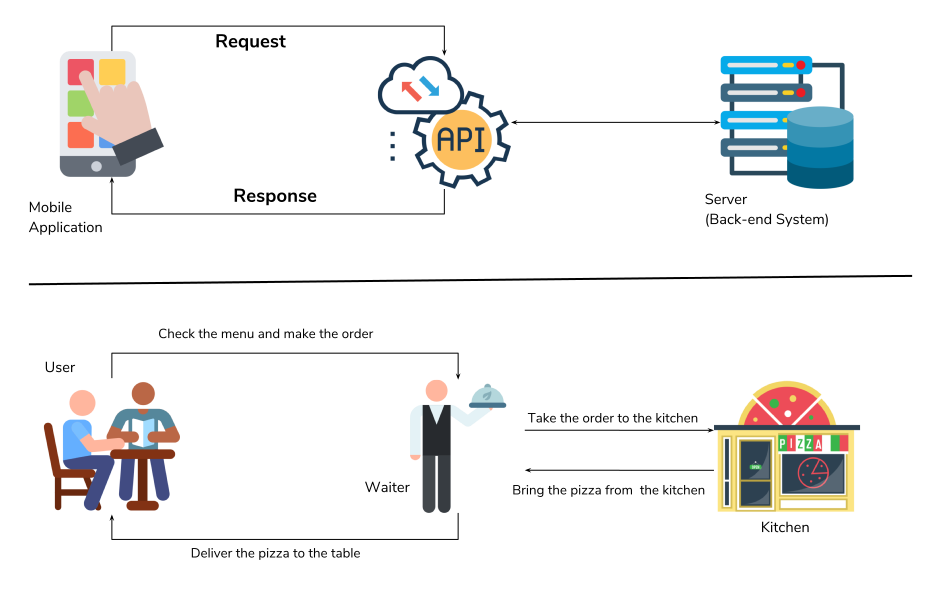Ever wondered how different apps seamlessly share information without someone manually copying and pasting data? The magic behind this efficiency is API integration.
Don't worry—if you're not tech-savvy, you've come to the right place. This guide explains API integration simply and clearly. You’ll also see practical examples using popular apps like Asana, Miro, and Glean to understand exactly why it matters to your business.
What Exactly is API Integration?
API stands for Application Programming Interface. Think of APIs as a set of rules or bridges allowing different software applications to communicate with each other, sharing data and functionality seamlessly.
API integration simply means connecting these bridges, allowing your business tools to talk to each other automatically, saving you valuable time.

Benefits of Using API Integrations
Here's why API integration matters for your business:
-
Efficiency & Automation: Removes manual processes, freeing your teams to focus on more valuable tasks.
-
Better Decision-Making: Real-time integration of data from multiple sources ensures accurate insights and timely decisions.
-
Enhanced Collaboration: Integrated apps mean better teamwork, as information and updates flow effortlessly.
-
Scalability & Flexibility: Easy to adapt integrations as your business grows or your needs change.
-
Improved Security & Compliance: APIs (especially with tools like Glean) offer robust methods to ensure your data stays protected and compliant.
Common API Integration Terms Explained
Here are a few commonly-used API integration terms, explained simply:
-
REST API: A common, flexible API type used by most cloud apps to exchange data.
-
Endpoint: The specific URL where API data is accessed or updated.
-
Webhook: A real-time notification sent automatically between apps when certain events occur (e.g., a new lead created).
How Do You Get Started with API Integrations?
Ready to harness API integrations? Here’s how to start:
-
Identify your needs: Choose which apps and workflows you want connected (e.g., Asana and Salesforce).
-
Leverage built-in integrations: Many apps (Asana, Miro, and Glean included) offer ready-to-use integrations.
-
Work with a trusted partner: A partner like Generation Digital can ensure smooth setup, security compliance, and ongoing support tailored specifically to your business.
FAQs About API Integrations
Here are clear answers to frequently asked questions about API integrations:
Can I integrate Asana with our CRM?
Yes! Asana integrates seamlessly with popular CRMs such as Salesforce and HubSpot, automating task creation and enhancing workflow efficiency.
How can Miro integrate with my existing workflows?
Miro integrates easily with project management and communication tools like Asana, Jira, Slack, and Microsoft Teams, making collaboration visual, engaging, and efficient.
Is API integration secure for sensitive business data?
Yes, APIs are designed to be secure. Working with platforms like Glean can further enhance your data governance, compliance, and security standards.
What support can Generation Digital provide for API integrations?
Generation Digital helps you plan, implement, and optimise API integrations, ensuring your business achieves the maximum value and highest security standards.
Examples of API Integration for Popular Business Apps
Let’s dive into real-world examples to see API integrations in action with Asana, Miro, and Glean.
1. Asana Integrations
Asana is a powerful project management tool that can integrate with many popular apps, enhancing your workflow:
-
CRM to Asana tasks: Automatically create Asana tasks when a new lead is added to your CRM (like Salesforce or HubSpot), eliminating manual data entry and speeding up follow-up times.
-
Reporting Dashboards: Connect Asana with analytics platforms (such as Power BI or Tableau) to display real-time project status, improving decision-making and transparency.
-
Marketing Automation: Trigger marketing campaigns in tools like Mailchimp or HubSpot directly from completed tasks in Asana.
2. Miro Integrations
Miro, the popular visual collaboration platform, integrates with various apps to enhance teamwork:
-
Embedded Collaboration: Integrate Miro boards directly within Asana projects or Jira tickets, allowing your teams to visually brainstorm, strategise, and execute without ever leaving their main workspace.
-
Real-Time Data Sync: Automatically update Miro boards from external data sources or spreadsheets, ensuring everyone always has the latest insights.
-
Project Management Sync: Automatically transfer visual tasks from a Miro board into structured tasks in Asana, Monday.com, or Trello.
3. Glean Integrations
Glean, an enterprise AI search and knowledge tool, uses APIs to securely connect and enhance data management:
-
Unified Search: Integrate Glean with platforms such as Google Workspace, Microsoft Office 365, Slack, or Confluence. This gives your teams a single, secure search experience across all apps.
-
Enhanced Security & Compliance: Leverage APIs to automate and strengthen security monitoring, compliance, and data governance—perfect for regulated industries or public sector organisations.
-
Automated Content Indexing: Keep your organisation's knowledge base always up-to-date by automatically indexing new data across multiple connected sources.
Conclusion
API integrations are no longer just for tech teams—they’re critical for every modern business. By leveraging integrations with powerful tools like Asana, Miro, and Glean, your organisation can unlock productivity, enhance collaboration, and maintain robust data security.
Generation Digital specialises in making API integrations easy, effective, and secure—so you can focus on your business, not the tech behind it.
Ready to streamline your workflow? Book a consultation below.




